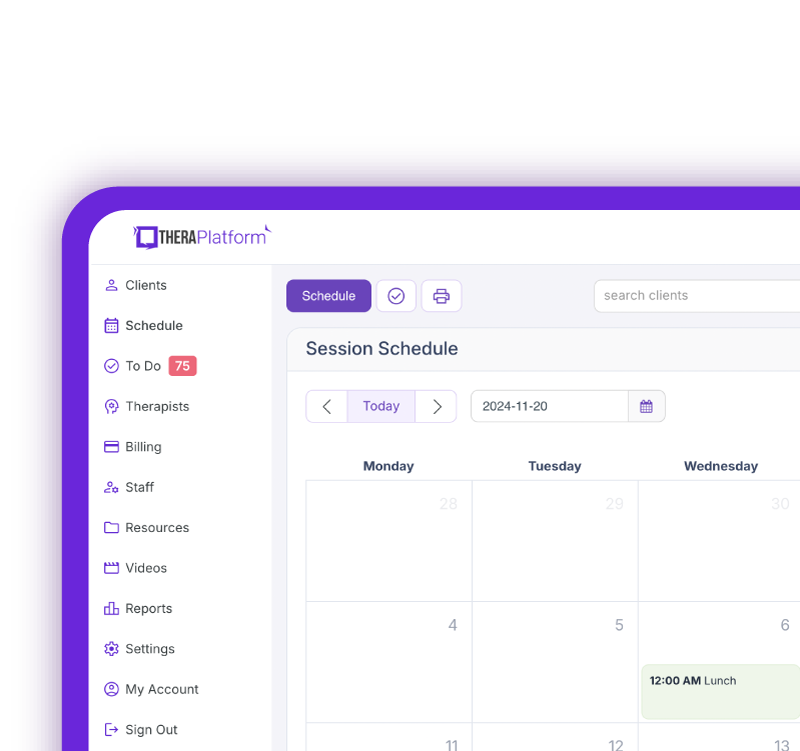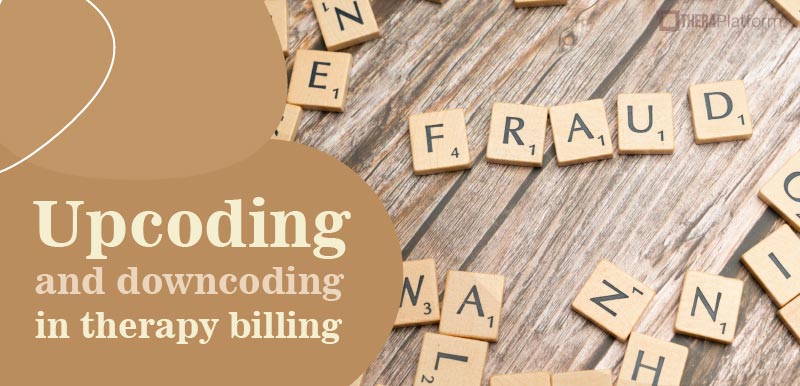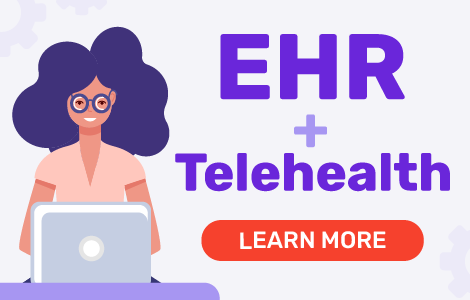GA modifier for therapists

The GA modifier is used by therapists who bill Medicare and should be familiar with the code to navigate some of its complexities.
Summary
- The GA modifier is used when a therapist provides a service that Medicare may not cover, and a signed Advance Beneficiary Notice (ABN) is on file. It ensures transparency by notifying Medicare that the client has been informed about potential non-coverage and may be responsible for payment.
- Therapists should apply the GA modifier in specific cases, such as when services exceed Medicare’s therapy caps, involve maintenance therapy, or fall outside coverage guidelines. It should never be used without a signed ABN.
- Proper documentation, including a signed ABN and detailed service records, is essential for compliance. Therapists must attach the GA modifier to the relevant CPT code, and if Medicare denies the claim, the client assumes financial responsibility.
- To avoid misuse, therapists should educate clients on the purpose of the GA modifier, verify Medicare coverage before applying it, and maintain clear, thorough documentation to justify medical necessity.
→ Click here to enroll in our free on-demand Insurance Billing for Therapists video course [Enroll Now]
The GA modifier is an important indicator used in billing to signify that a signed Advance Beneficiary notice (ABN) is on file for services that Medicare is likely to deny.
The purpose of the GA modifier is to alert Medicare that the client has been informed they may be responsible for payment. It ensures transparency and protects therapists from a potential financial risk.
Streamline your insurance billing with One EHR
- Claim batching
- Auto claims
- Automated EOB & ERA
- Real-time claim validation
- Real-time claim tracking
- Aging and other reports

The GA modifier serves as documentation that the client was aware of the potential for non-coverage and wished to proceed with services. Therefore, the client understands that he or she might be responsible for payment of denied services.
A thorough understanding of the purpose and proper application of the GA modifier is crucial for maintaining an ethical practice and financial stability. Let’s explore what therapists should know about the GA modifier.
When to use the GA Modifier
The GA modifier should only be used specifically in applicable scenarios. This includes instances in which therapists are providing services that Medicare may deem as not medically necessary or as falling outside of coverage guidelines.
Examples of applicable scenarios in which the GA modifier may be applied include:
- Services Exceed Therapy Caps: Medicare typically sets coverage limits, such as the number of therapy sessions or specific procedures that are covered within a specified timeframe. If a therapist recommends additional sessions or services beyond these limits, it might be necessary to apply the GA modifier.
- Maintenance Therapy: In certain cases, a therapist may recommend a service that does not align with Medicare’s criteria to deem it as medically necessary. This can include maintenance therapy beyond a certain point.
- Services Outside of Coverage Guidelines: Medicare has complex coverage guidelines that frequently undergo updates and changes. Even if a therapist feels a certain service would benefit the client and is medically necessary, it can still fall outside of these guidelines. In that care, the GA modifier would need to be used.
Client notification
The GA modifier should only be used when the client has signed an Advance Beneficiary Notice (ABN). This document is essential and must be presented to the client before services are rendered. This allows the client to make an informed decision prior to receiving the service.
The ABN must clearly outline the services in question and explain why coverage may be denied by Medicare. The document should also state the details of the client’s potential financial responsibility for those services.
Watch this video to learn common insurance billing struggles and solutions
→ Start My Free Trial
→ Start My Free Trial
Documentation requirements
Thorough documentation is a critical component of using the GA modifier. This includes two key elements:
- Signed ABN: Therapists must have an ABN signed by the client as proof that the client was informed about the potential lack of coverage for the recommended service and their possible financial responsibility. The therapist should keep a copy on file and provide a copy to the client.
- Service details: In the client’s medical record, the therapist should document the specific service that is recommended and state why it may not be covered by Medicare. This should include details regarding why the service may not meet Medicare’s guidelines for covered services. For example, a reason such as “this service may be considered as maintenance therapy that is beyond the functional goals established for the client” may be noted.
Practice Management + EHR + Telehealth
Mange more in less time in your practice with TheraPlatform

Billing guidelines
Following certain billing guidelines helps therapists maintain compliance.
Claim submission
- Attach the GA modifier to the CPT code for the service in question.
- Medicare reviews the claim and determines coverage for the service.
- If the service is not covered, Medicare denies the claim and the client becomes responsible for the payment (as stated in the ABN).
Client responsibility
- Medicare’s denial of a service shifts payment responsibility to the client as per the signed ABN.
- The therapist bills the client directly and includes clear communication about the payment obligations.
- A copy of the claim and denial should be kept by the therapist and the client for their reference.
Best practices for using the GA modifier
The GA modifier can be used appropriately and effectively by therapists through the use of best practice guidelines.
Educate clients
- Clearly explain the purpose of the ABN and the GA modifier.
- Communicate the potential costs, and what may or may not be covered by Medicare.
- Ensure that clients fully understand the information stated in the ABN by answering any questions they may have prior to signing the document.
Avoid misuse
- The GA modifier should never be used without a signed ABN.
- Never apply the GA modifier to services that are typically covered by Medicare or without a specific reason that a denial is expected.
- Ensure that the ABN is created specifically for each client, outlining the details of the services recommended for them and information regarding their individual coverage.
Verify coverage
- Check Medicare policies to confirm when an ABN and GA modifier are required.
- Refer to Medicare guidelines for the most up to date information on coverage rules and therapy caps.
- Use resources such as Medicare’s online tools or consult with billing specialists to determine whether an ABN is necessary.
- Use clear, thorough documentation to justify medical necessity of recommended services.
Navigating the world of Medicare billing can be challenging for therapists, but remaining informed on guidelines and changes is key. The GA modifier plays a critical role in protecting clients and therapists when services are not anticipated to be covered by Medicare.
The GA modifier is important for allowing clients to make informed decisions, ensuring transparency, and for therapists to mitigate financial risks.
Therapists play a key role in the process of using the GA modifier. They must maintain compliance with Medicare guidelines and accurately inform clients about information regarding services and lack of coverage. Using the GA modifier correctly can facilitate ethical practice and billing guidelines to benefit both therapists and clients.
How EHR and practice management software can save you time with insurance billing for therapists
EHRs with integrated billing software and clearing houses, such as TheraPlatform, offer therapists significant advantages in creating an efficient insurance billing process. The key is minimizing the amount of time dedicated to developing, sending, and tracking medical claims through features such as automation and batching.
What are automation and batching?
- Automation refers to setting up software to perform tasks with limited human interaction.
- Batching or performing administrative tasks in blocks of time at once allows you to perform a task from a single entry point with less clicking.
Which billing and medical claim tasks can be automated and batched through billing software?
- Invoices: Create multiple invoices for multiple clients with a click or two of a button or set up auto-invoice creation, and the software will automatically create invoices for you at the preferred time. You can even have the system automatically send invoices to your clients.
- Credit card processing: Charge multiple clients with a click of a button or set up auto credit card billing, and the billing software will automatically charge the card (easier than swiping!)
- Email payment reminders: Never manually send another reminder email for payment again, or skip this altogether by enabling auto credit card charges.
- Automated claim creation and submission: Batch multiple claims with one button click or turn auto claim creation and submission on.
- Live claim validation: The system reviews each claim to catch any human errors before submission, saving you time and reducing rejected claims.
- Automated payment posting: Streamline posting procedures for paid medical claims with ERA. When insurance offers ERA, all their payments will post automatically on TheraPlatform's EHR.
- Tracking: Track payment and profits, including aging invoices, overdue invoices, transactions, billed services, service providers.
Utilizing billing software integrated with an EHR and practice management software can make storing and sharing billing and insurance easy and save providers time when it comes to insurance billing for therapists.
Streamline your practice with One EHR
- Scheduling
- Flexible notes
- Template library
- Billing & payments
- Insurance claims
- Client portal
- Telehealth
- E-fax

Resources
TheraPlatform is an all-in-one EHR, practice management, and teletherapy software built for therapists to help them save time on admin tasks. It offers a 30-day risk-free trial with no credit card required and supports mental and behavioral health, SLPs, OTs, and PTs in group and solo practices.
More resources
- Therapy resources and worksheets
- Therapy private practice courses
- Ultimate teletherapy ebook
- The Ultimate Insurance Billing Guide for Therapists
- The Ultimate Guide to Starting a Private Therapy Practice
- Mental health credentialing
- Insurance billing 101
- Practice management tools
- Behavioral Health tools
Free video classes
- Free on-demand insurance billing for therapist course
- Free mini video lessons to enhance your private practice
- 9 Admin tasks to automate in your private practice
References
Burks, K., Shields, J., Evans, J., Plumley, J., Gerlach, J., & Flesher, S. (2022). A systematic review of outpatient billing practices. SAGE Open Medicine, 10, 20503121221099021. DOI: https://doi.org/10.1177/20503121221099021 .
Schwartz, A. L., Chen, Y., Jagmin, C. L., Verbrugge, D. J., Brennan, T. A., Groeneveld, P. W., & Newhouse, J. P. (2022). Coverage Denials: Government And Private Insurer Policies For Medical Necessity In Medicare: Study examines medical necessity coverage denials in Medicare and private insurers. Health Affairs, 41(1), 120-128. DOI: https://www.healthaffairs.org/doi/full/10.1377/hlthaff.2021.01054
Warren, S., & Sampson, M. (2023). Amid Billing Error Concerns, Medicare to Review SNF Claims Nationwide—and Recoup Losses. Leader Live. DOI: https://leader.pubs.asha.org/do/10.1044/2023-0515-slp-snf-claims-review/full



